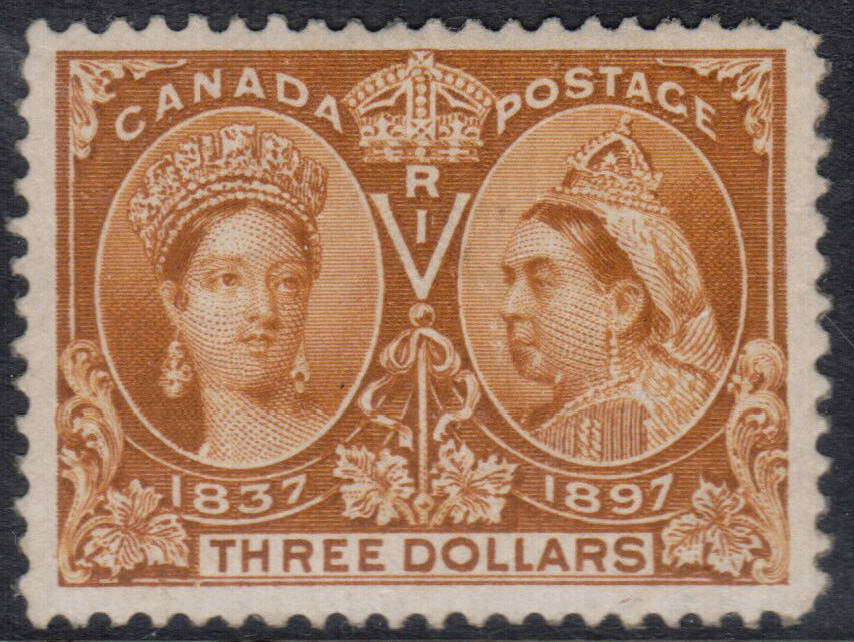How to easily tell if your stamp has been re-gummed
This article will show you how to tell if any of your stamps have been re-gummed.
Have you ever wondered what the most valuable commodity in the philatelic world is? Would you be shocked if I told you it is GUM! Yes, that’s not an exaggeration. If one carefully compares prices realized at auction for the same stamps in the same condition ( grade/centering, fault free ), one quickly sees that MNH (Mint Never Hinged or Post Office Fresh) copies can easily fetch up to 10 times that of their hinged or no gum counterparts. The MNH phenomenon has been around for many decades and is premised on the fact the discerning collectors want the BEST stamp in their collections. Who would not prefer a MNH example of a Canada Sc# 158 (the Famous Bluenose) over a hinged copy? The question now becomes how much more would you pay for it. Many collectors sometimes think that this is a dealer’s way of extracting more money out of a collector by charging more for MNH stamps. In reality, it is the collector that drives the market, not the dealers. A stamp is and always will be worth what a collector is willing to pay for it. Catalog values are a guide, but collectors truly drive & determine the value of stamps.
Now, where there is a market, there is always those unscrupulous individuals that will try and capitalize on it.
Why would someone go to the trouble of re-gumming a stamp you ask?. Simply put, for profit & usually to deceive the unsuspecting collector. Hence, the art & process of re-gumming stamps. Some will say that re-gumming of a stamp is partly for preservation. That could be true in some instances, BUT it MUST be disclosed to the purchaser at the time of purchase.
If a stamp has been re-gummed and it is offered as such, most collectors will evaluate it’s worth & pay accordingly. Personally, I have purchased re-gummed stamps, where the MNH example was beyond my financial means, but the stamp was of such rarity & beauty, that I would be happy to purchase it, but at a MUCH lower cost than the MNH example. Many argue that Re-gummed stamps are not that bad. You can easily remove the gum & have a Mint No Gum example. The choice is yours to make, but you must know that the stamp is re-gummed. Do not assume that sellers will disclose to you that a stamp is re-gummed. In some instances, the seller may not be aware that it is re-gummed. The old adage “Caveat emptor“ or buyer beware is quite true here.
 There is another reason unscrupulous individuals will re-gum a stamp, and that is to hide hidden faults such as thins & pin holes. What are thins? There are thin spots, usually on the gum side of a stamp, that are caused by removing a hinge or removing a stamp that was stuck down in an album or on a cover. The removal process pulls paper fibers from the stamp & leaves the area thinner relative to the surrounding area of the stamp . Applying gum to a thin spot is a common method to hide the thin or pin hole.
There is another reason unscrupulous individuals will re-gum a stamp, and that is to hide hidden faults such as thins & pin holes. What are thins? There are thin spots, usually on the gum side of a stamp, that are caused by removing a hinge or removing a stamp that was stuck down in an album or on a cover. The removal process pulls paper fibers from the stamp & leaves the area thinner relative to the surrounding area of the stamp . Applying gum to a thin spot is a common method to hide the thin or pin hole. 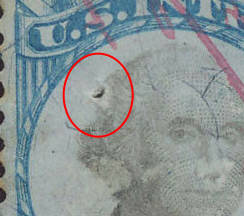
With some knowledge and experience, most collectors can protect themselves from making purchases where stamps are not fully described or faults are not divulged by a seller.
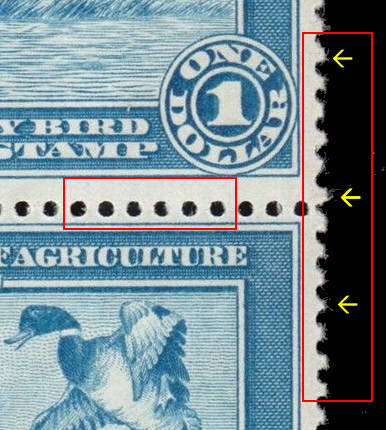 Now, lets show you some easy ways to tell if your stamps has been re-gummed.
Now, lets show you some easy ways to tell if your stamps has been re-gummed.
When stamps are made, the paper is first gummed & then perforated. When the perforation holes are cut into the paper, there is usually a clean cut, round hole made in the paper. When stamps are separated from multiples such as blocks or sheets, the separation process involves the breaking or tearing of the paper fibers and this usually leaves traces of tiny, very thin paper fibers at the end of the perf tips. Why is this important you ask?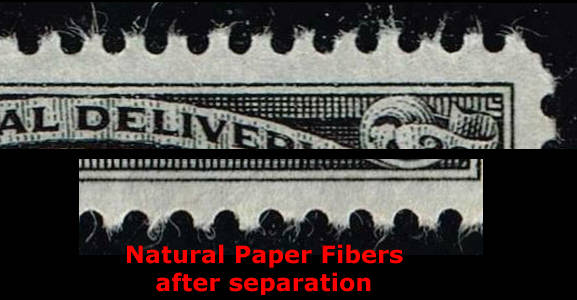
Lets explain. When a stamp is re-gummed, it involves the transfer of gum to the back of the stamp, usually to the entire backside after the stamp has been separated. When the gum is applied, the excess gum rolls into the perfs, both in the valleys & tips of the perf and sometimes to the perfs on the front of the stamp and the tiny paper fibers on the perf tips. This is IMPOSSIBLE on a normal stamp. When the stamps are perforated, the perforation process cleanly cuts through the paper & gum and there can be NO gum on the sides or front of the perfs or on the paper fibers. A re-gummed stamp will show these tell-tale signs.
be NO gum on the sides or front of the perfs or on the paper fibers. A re-gummed stamp will show these tell-tale signs.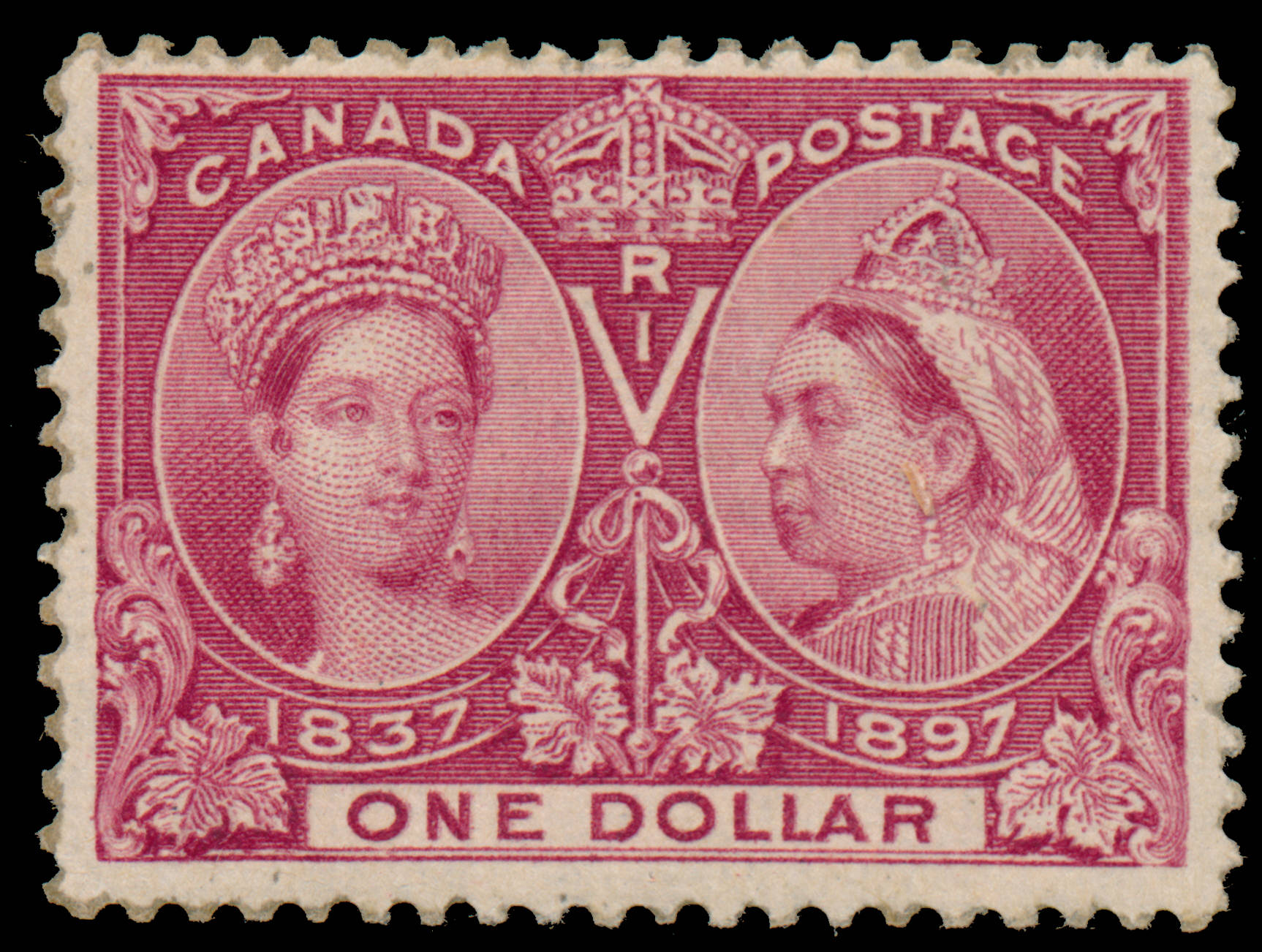
Some re-gummers will actually trim the perf tips to remove the gummed paper fibers in an attempt to conceal their work. Be HIGHLY suspicious of straight perf tips!
Another sign that a stamp has been re-gummed is the excessive CURLING of a stamp. One method of re-gumming is to use a paint brush to brush on the new glue (which is never the same as the original gum). Curling can be caused by the shrinking of the gum or by the natural weave of the paper fibers. All stamps have a natural curl to them. To be able to tell if a stamp is re-gummed, you will need to compare a genuine example of the stamp to the suspected one. All stamps of the same issue will have curling in the same direction. A stamp that curls in the opposite direction compared to the genuine stamps is most certain to be a re-gummed stamp. Depending on how the re-gummer applied the gum ( ie left to right or top to bottom, the stamp will curl differently). It is wise to have a genuine gummed example of the same issue to determine the genuine direction of curling.
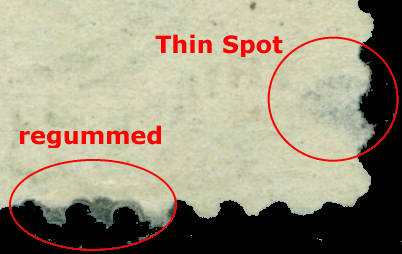
Another way to tell if a stamp is re-gummed, is the gum itself. One needs to know what the gum on a genuine example looks like & compare that to a suspect stamp. What I do is keep an inexpensive reference copy of a stamp from the series ( ie the US Colombians, or Canada Jubilee series) on hand to compare. It does not need to be MNH. A hinged Original Gum Copy is fine.
When in doubt & you are making a large purchase, it is always wise to get a guarantee in writing and a certificate of authenticity. No reputable dealer or seller will refuse such a request. If they do, walk away!
Collectors should be aware of the methods used to re-gum stamps. This is valuable information to have.
Method 1: Gum is applied with a brush to the backside of a stamp.
Method 2: Gummed selvedge is used to transfer gum to the subject stamp. By applying a little moisture to the gummed selvedge (either with a very lightly dampened brush or by licking it) and then aligning the selvedge (gum side down) to the back of the stamp (gum side up) and applying gentle but uniform pressure , then waiting a very short time (usually no more than 3 seconds), and then sliding the selvedge off the stamp in one quick gentle motion. This will transfer some gum from the selvedge to the stamp. This takes practice and several transfers may be needed to accomplish the task.
Method 3: A relatively new method of re-gumming is with the use of micro-sprayers or atomizers. These spray a very fine fog of gum to the stamp and can produce a very even & uniform coating of gum. Sounds ominous in the wrong hands.
Most re-gumming is highly dependent on the skill of the individual, and some are very artful in their craft. Take the test. Are the stamps below re-gummed? Look carefully knowing what you have learned above
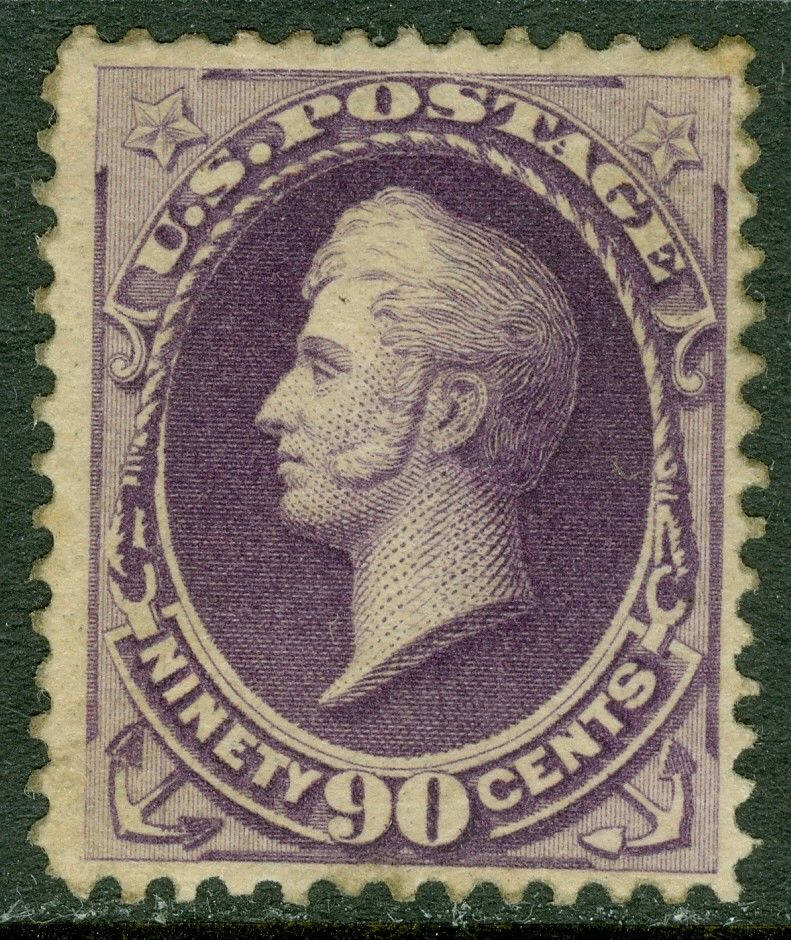
.